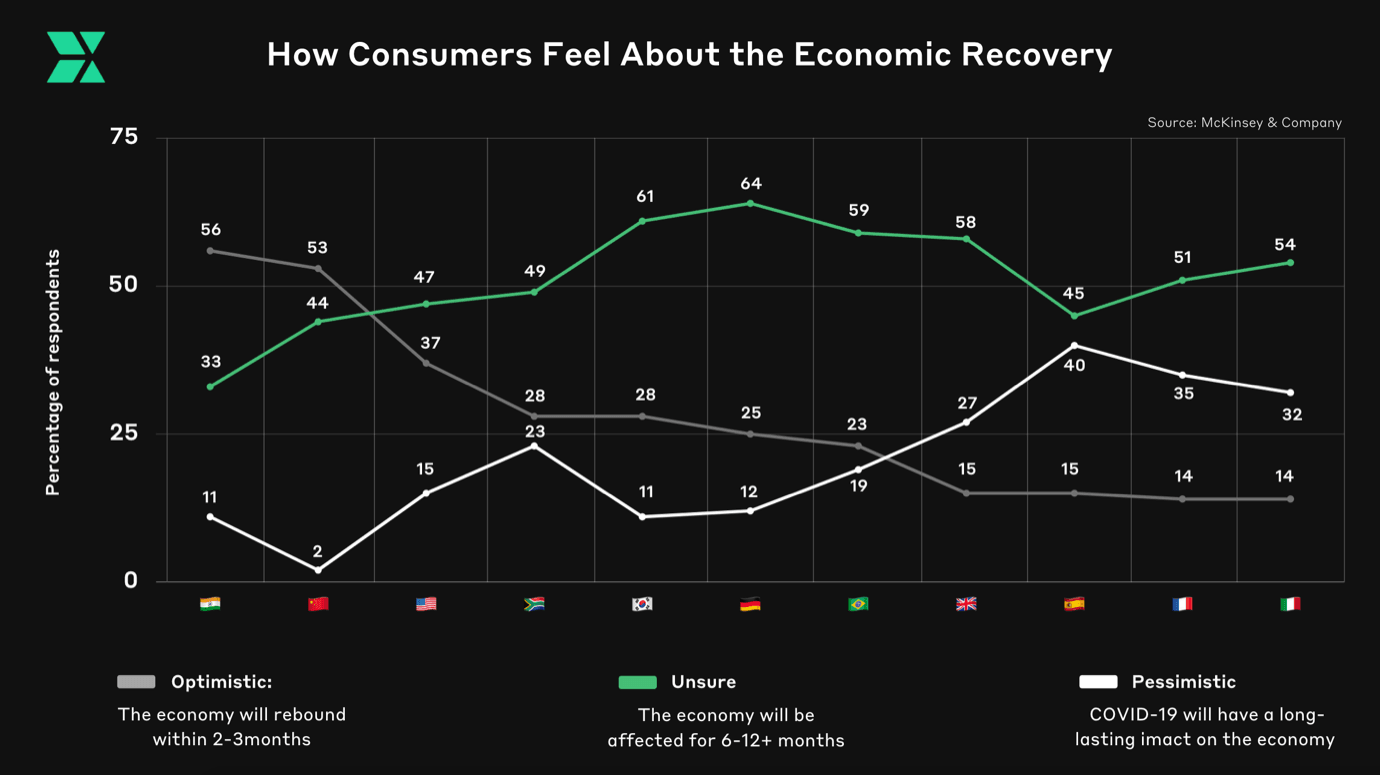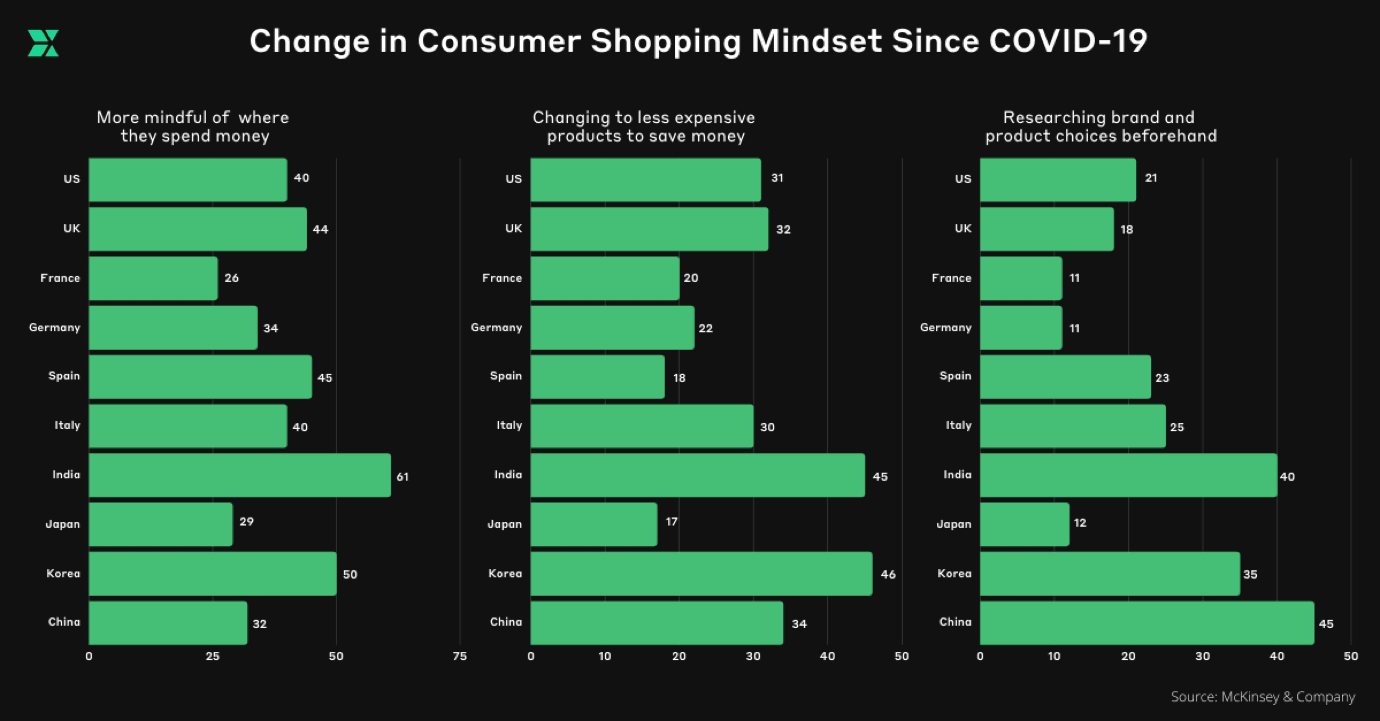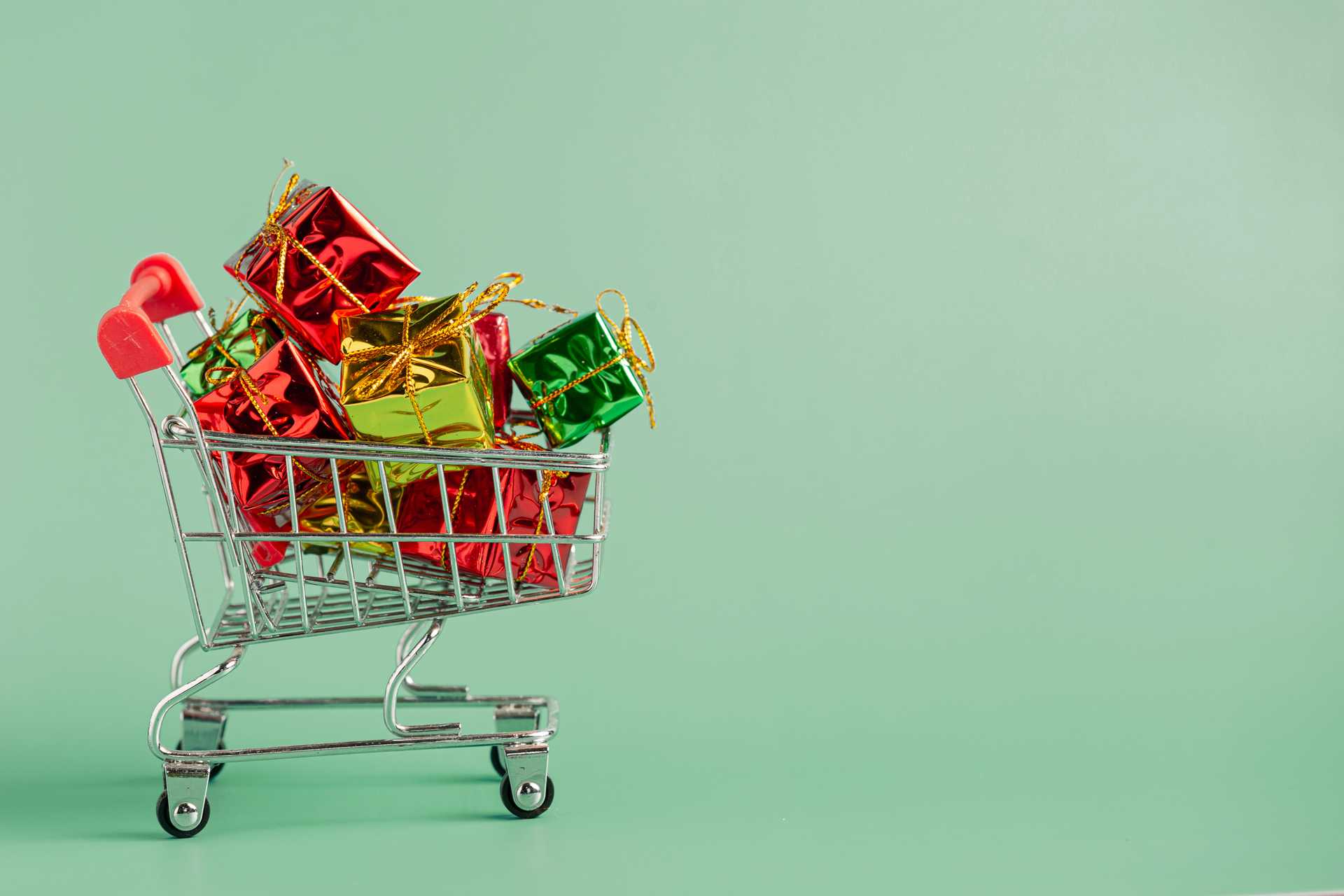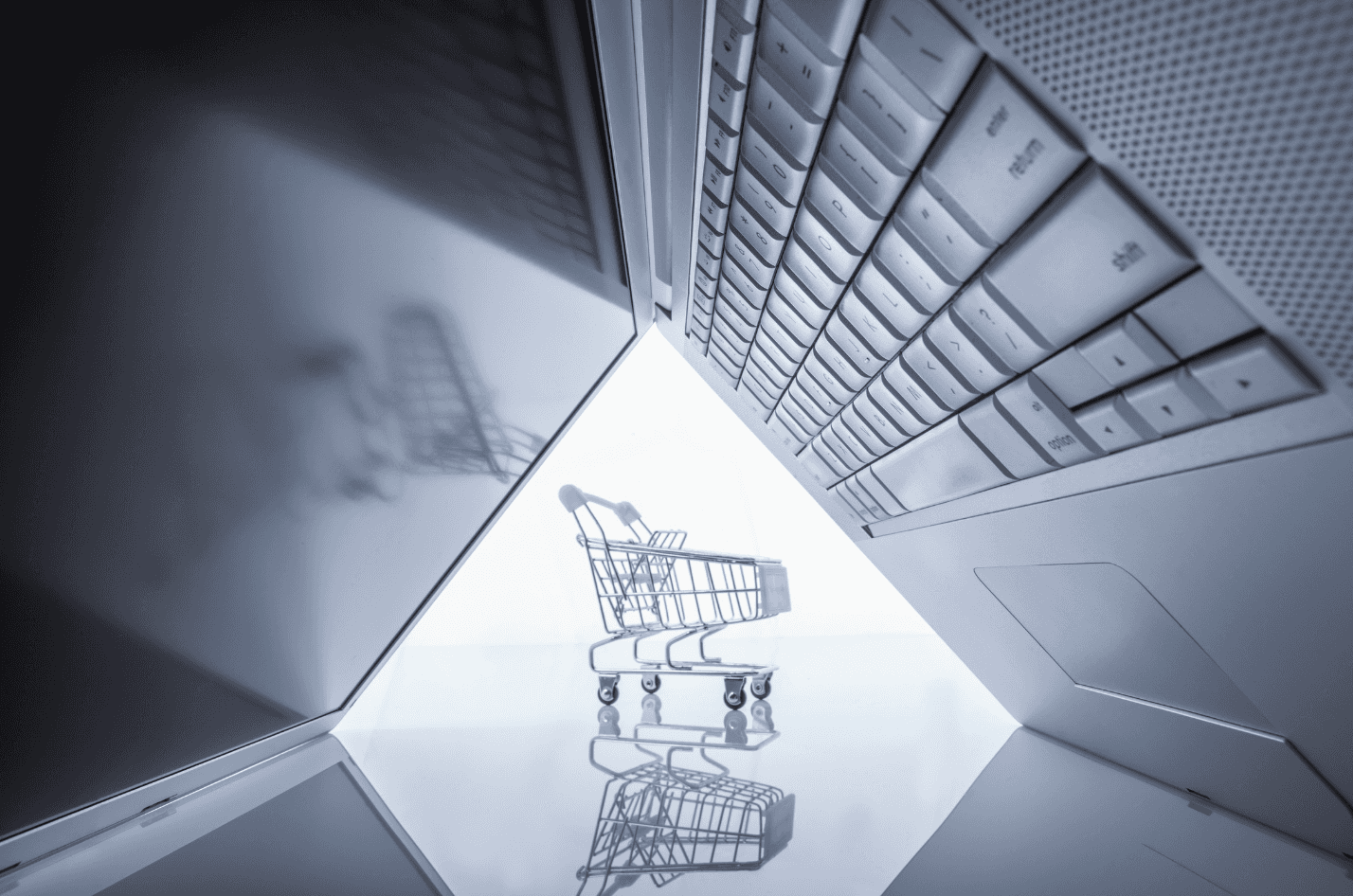
Articles
Businesses Must Adapt to the Changing Consumer Behaviours Shaping the ‘New Normal’
7.09.2020
The routines and values that guided consumers have been reshaped by the world-changing phenomenon that is the COVID-19 crisis. And while the world is learning to live with the reality of the virus, there is still a general sense of pessimism about the globe’s economic recovery. However, if there is one thing the pandemic can teach us, it’s a valuable lesson in how consumers behave when they’re in ‘survival mode’.
Today, as lockdowns, quarantine, social distancing and working from home become the norm, we find ourselves in a very different world than that of January 2020. Yet, as many try to predict what the lasting effects of the pandemic will be, it’s clear that for businesses to stay relevant, they need to adapt.

The Seismic Shift Towards Digital
Perhaps the biggest precursor to the COVID-19 crisis’ effect on spending behaviour was the 2008 recession that had long-lasting effects on consumer confidence, which — according to experts — didn’t return until 2017 for some. According to various studies conducted by McKinsey, consumers primarily reduced their spending by:
- Eating out less
- Cutting back on nonessentials
- Capitalising on special deals
- Switching to cheaper brands
- Shifting channels to shop at value retailers
Combined with the effects of the coronavirus pandemic, where physical distancing has become the ‘new normal’, consumers have shifted their purchasing behaviour online which has significantly impacted the eCommerce industry.
Offering the promise of a ‘safe’ experience as opposed to shopping in crowded stores, the online shopping industry has boomed significantly since the start of the pandemic. Online grocers have seen a 30% increase and, with wellness predominantly being a top priority, at-home exercise equipment sales spiked by 60% — with the online trajectory expected to continue as hygiene remains top of mind.
To succeed in this new reality, businesses are having to adapt to life without a physical presence by enhancing their online performance. Ensuring websites are adapted for online purchases, optimising content for SEO purposes and pumping monthly spend into marketing will position companies to cater to new consumption preferences, ultimately guaranteeing their survival in a post-pandemic world.
A Change in Marketing Messaging
With the battle to eradicate COVID-19 expected to be a long one, companies will need to prove and reinforce their safety and trust credentials. Consumers appreciate brands that adapt to their needs during difficult times and who possess a heightened sense of corporate responsibility. With this in mind, organisations should emphasise the importance of health and cleanliness when developing their marketing messages.
A recent study found that 58% of consumers are more likely to opt for brands providing a necessary service, with 55% saying that they are impressed by companies who have made changes to help their customers. This includes businesses who are helping communities as well as individuals. Additionally, 58% of consumers said that they value responsible messaging, where 54% appreciate charitable contributions made by brands. Half of all participants said that they regard companies that are addressing coronavirus concerns in high esteem.
While it’s important for companies not to exploit the COVID-19 crisis as a commercial opportunity, businesses who have redirected their marketing messages to cover sustainability, community aid, support, a sense of purpose and solidarity show consumers that they care about more than just revenue.
Taking Price Sensitivity Into Account
Global unemployment rates have hit record levels with an estimated 400 million people losing their full-time jobs to-date. In times of insecurity, humans tend to avoid exploring new things, only focusing on meeting their basic needs. With so many consumers unsure of their future, it’s little surprise that they’ve cut back on spending.
The latest research reveals that they are becoming increasingly more mindful of where they are spending their money, while many are opting for less expensive products to save money, and others are researching brand and product choices before buying.

In terms of what they are buying, people are sticking to what they know. According to a recent survey, 27% of consumers said that they’re spending less across all categories with the majority saying they have stopped buying as much clothing and are no longer investing in leisure experiences. While 25% of consumers say they are continuing to spend as per normal, they are only doing so with brands that they are loyal to. In general, items seen as luxuries will likely continue to be cut from monthly spending as families try to recover from the economic downturn.
With customer behaviour being shaped by conscious consumption, brands should reposition their pricing accordingly. Offering special deals and discounts on basic consumer goods will differentiate companies from their competitors. Additionally, businesses should also focus on nurturing existing customer relationships, improving existing client services, removing any factors that may deter anxious customers, and avoid launching new products and services.
Contactless Payments Continue to Evolve
In most countries, almost 70% of consumers say they don’t feel comfortable resuming conventional out-of-home activities, while over three-quarters say that they’re waiting for guidance from medical authorities on the reassurance of a viable COVID-19 vaccine and treatments before venturing outdoors regularly.
However, while certain consumers in most nations are slowly resuming some out-of-home activities, with shopping first on the list (and large events and air travel last) — in addition to eCommerce — contactless services are seeing much higher adoption rates.
Due to hygiene concerns, nearly 40% of consumers said they are more likely to use contactless payment options via their mobile device or credit card when shopping. Thanks to this rapidly growing trend, there has been a significant increase in the number of people relying on mobile wallets such as Apple Pay, Google Pay and PayPal to purchase goods, as well as applying for credit cards. For example, credit card companies in Japan are battling to produce original 16-digit numbers as consumers forgo regular shop visits and opt for plastic over hard cash.
While the decline of cash has been a long-occurring trend, COVID-19 has sped up the transition for most consumers. Businesses who encourage their customers to use low-touch or no-touch forms of payment are the ones most likely to prevent a loss — as are eSellers who offer robust payment gateways on their online stores.
By providing a seamless user experience in their website or app, online merchants can offer an increased sense of customer satisfaction. In fact, according to a recent survey, with online payments fast becoming ubiquitous, customer experience is becoming the prime competitive differentiator.
With the above in mind, it’s clear that the consumer behavioural trends that are manifesting during the crisis are going to persist — the online shopping boom, a change in digital marketing messaging, price sensitivity and a rise in contactless payments will affect every consumer-facing company. By establishing a solid strategy that caters for changing consumer needs, companies can emerge stronger from the crisis and be well-positioned to succeed in the next normal.
About Currenxie
Currenxie was founded in 2014 to give modern businesses access to global digital banking. Since then, the Currenxie Global Account® has helped thousands of businesses go global with multi-currency business accounts, borderless payments and competitive foreign exchange. Optimise your online store and automatically receive local payments from leading gateways with a Currenxie Global Account. Sign up for yours today.

